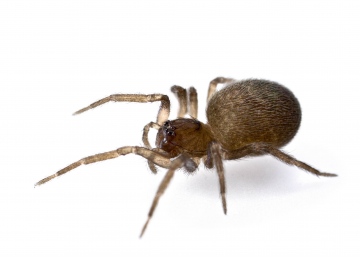Summary for Lathys stigmatisata (Araneae)
previous species | next species
National Distribution
Terms of Use. Double-click on map to go to region

Explore Regional Distribution
Please log on and add a note on this species
About this species
Recorded altitude range1m to 5m
Species text
DistributionThe species was recorded early in the 20th century from the Lizard and Kynance, West Cornwall, and Lundy Island, off the North Devon coast. In the 1960s it was found at Chapel Porth, East Cornwall, and Dungeness, East Kent (it was also recorded at the latter site in 1982 and found to be quite numerous there in the late 1980s during an NCC survey). In the mid-1980s and 1989 the spider was found at Rye Harbour, East Sussex; and in the late 1980s at the Crumbles, East Sussex. The most recent record is from Ramsey Island, off the Pembrokeshire coast in 1999 (Dawson 2000). Lathys stigmatisata is a Palaearctic species also known from France, Belgium, Germany, Austria, Switzerland, the former Czechoslovakia, Poland, Russia, Hungary, Yugoslavia and the Balkans.
Habitat and ecology
Found under stones, among heather and grass, and among sparse vegetation on shingle. Both sexes are adult in April and females have also been found in June.
Status
The species is apparently rare, but as it matures early in the season it may have escaped detection in some localities. At most known sites several specimens have been found.
Threats
Chapel Porth, Kynance Cove and Lundy are National Trust properties, the last two also being SSSIs. The Cornwall Trust has a reserve at Kynance Cliffs. The Lizard is an SSSI and in part an NNR. The Rye Harbour records are from within the LNR, Ramsey Island is now an RSPB reserve, and Dungeness is an SSSI and in part an RSPB reserve. Threats include the loss of coastal heathlands in Cornwall and public pressure on the remaining ones. Accidental fire is a risk at Kynance. Dungeness is being degraded by a number of activities including gravel extraction, vehicle damage and trampling. The last two cause disturbance to the fragile vegetation and the thin covering of soil, resulting in the creation of areas of bare shingle The shingle habitat at the Crumbles has been destroyed by building and marina development.
Management and conservation
The National Trust now controls public access at Kynance Cove and the previously serious damage from trampling of the cliff-top vegetation has eased. The National Trust and English Nature are reintroducing grazing to this site, which should benefit the heathland and grassland communities.
Text based on Dawson, I.K., Harvey, P.R., Merrett, P. & Russell-Smith, A.R. (in prep.). References
Adult Season
Habitats
background methodology
Recorded management for locations with Lathys stigmatisata
Recorded substrate and hydrology for locations with Lathys stigmatisata
Images
please log on and upload a new image for this speciesSee also A-Z Species Index - A-Z Picture Index - previous species | next species

